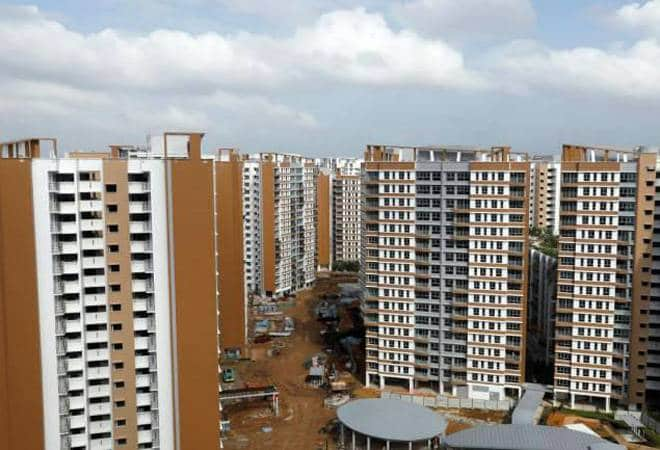Modi Government 2.0 has continued its push for affordable housing by increasing annual tax exemption on interest paid for self-occupied property from Rs 2 lakh to Rs 3.5 lakh besides making available land from public sector enterprises for construction of affordable homes.
The government will also bring in a model tenancy law to push utilisation of vacant houses in a country where real estate sales are moving at a sluggish pace due to high prices.
Pankaj Kapoor, MD and founder of real estate consultancy Liases Foras, said the increase in tax exemption for houses under the Rs 45 lakh bracket will push sales in the category which has 6.87 lakh unsold units over 50 cities and contributes 53 per cent of the total unsold inventory. “This measure will help in clearing up inventory and make houses affordable to customers,” Kapoor said.
“This is expected to drive the much-needed urgency in sales and bring the fence-sitters back into the market within this financial year,” Aashish Agarwal, Senior Director, Valuation and Advisory at Colliers International India.
Cumulatively, this will result in annual savings of nearly Rs 7 lakh for first time homebuyers. It will include Rs 3.5 lakh on interest, Rs 1.5 lakh tax exemption on principal and subsidy under the Prime Minister Awas Yojna (PMAY) where households with an annual income of up to Rs 18 lakh can avail Rs 2.3 lakh upfront subsidy.
“Already, the GST on affordable homes is only one per cent. The measure will collectively be a big driver for real estate,” Kapoor added.
Allowing the use of PSE (public sector enterprise) land for housing will also help bring down housing prices. “In the last 14 years, land prices have increased ten times. This has increased the cost for builders and pushed up sales price, making houses unaffordable,” Kapoor pointed out.
“The use of government’s land parcels for public infrastructure and affordable housing shall narrow the demand-supply gap,” Megha Maan, Senior Associate Director, Research at Colliers International India, said.
“Providing land from PSEs for affordable housing will help solve land acquisition problems and make prices more rational,” she added.
On rental housing too, the government continued the push created by the previous government, which had put forth a draft urban rental housing policy in October 2015. It was aimed at promoting public-private partnerships to accelerate rental housing and address shortage in urban areas.
As per the Census 2011, there are 11 million vacant houses in urban India. “A new tenancy law will bring this supply out in the market and put pressure on the already low rentals. There will be far reaching implications on over-priced housing inventory,” Kapoor said.
“The rental yield will go down further and put pressure on prices of builder inventory. Any model act will safeguard the interest of tenants and owners,” he added.
Maan said the new model tenancy law will balance the rights and responsibilities of both landlords and tenants. “It will make the rental market more efficient and streamlined across the country,” she added.
The government also said it will purchase pooled assets of financially sound NBFCs, amounting to Rs one lakh crore during the current financial year. The government will also provide one-time six months partial credit guarantee to public sector banks for first loss of up to 10 percent.
However, the measure is only applicable to financially strong NBFCs, making it difficult for those which are struggling to benefit from the proposal.
Sitharaman also said nearly 1.95 crore houses are proposed to be provided to eligible beneficiaries under the Pradhan Mantri Awas Yojana (Grameen) in rural areas. The completion of houses that required 314 days in 2015-16, has now come down to 114 days since 2017.
Since the PMAY (Urban) was launched in June 2015, construction has been started for 46 lakh houses out of which 26 lakh have been completed.
Source: Business-standard






